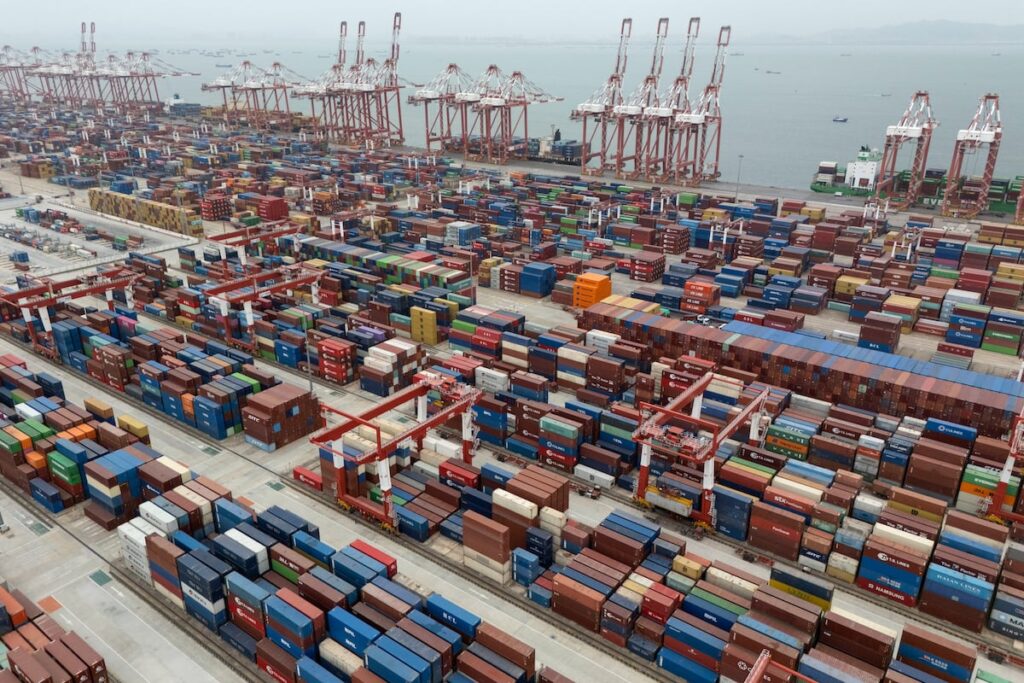
In the event of a conflict between the United States and China, the U.S. Army could play a pivotal role through the use of advanced long-range missile systems. While ground forces may not engage in direct assaults on major Chinese cities like Shanghai, they possess the capability to target critical infrastructure, particularly Chinese ports. These ports are essential for supporting naval operations and facilitating trade, making them strategic targets in a potential conflict.
The U.S. Army has developed a range of long-range munitions, including the Precision Strike Missile, Typhon Strategic Mid-Range Fires system, and Dark Eagle Long-Range Hypersonic Weapon. These weapons can engage targets from distances of approximately 1,000 to 3,000 kilometers. Targeting Chinese ports could disrupt key supply chains and military logistics, especially in scenarios involving an amphibious invasion of Taiwan.
Despite the tactical advantages, Capt. Micah Neidorfler of the Army National Guard cautions against damaging Chinese maritime infrastructure. In a recent essay for Military Review, Neidorfler argues that preserving such infrastructure is vital for post-war recovery. He posits that a strategy focused on incapacitating specific components of ports, rather than complete destruction, could yield strategic benefits without crippling long-term trade.
Neidorfler’s perspective challenges the traditional U.S. military doctrine, which has historically emphasized the destruction of enemy infrastructure. He highlights the interdependence of the U.S. and Chinese economies, stating, “U.S. domestic prosperity significantly depends upon international trade and the global economy, which in turn are deeply intertwined with China.” A victory that severely damages Chinese ports could have detrimental effects on global markets and U.S. economic interests.
The complexities of modern warfare necessitate a nuanced approach. Neidorfler suggests that while specific targets within ports could be disrupted, such as cranes and rail yards, this method would allow for a quicker restoration of functionality. This strategy minimizes the risks of escalation and maintains a degree of operational capability for both sides post-conflict.
As discussions about the Army’s potential contributions in a U.S.-China conflict evolve, Neidorfler emphasizes the need for a comprehensive understanding of the Army’s role. Over the past decade, the Army has prioritized themes such as command and control, sustaining joint forces, and effective air defense.
The question of whether the U.S. would actually strike Chinese ports remains contentious. Given China’s significant nuclear arsenal and intercontinental ballistic missiles, military leaders face a complex decision-making landscape. Neidorfler proposes an alternative approach: capturing Chinese-owned ports in other countries. This strategy could provide leverage in negotiations and prevent these facilities from being used for military purposes.
China’s extensive investments in foreign ports, with an estimated 129 projects involving Chinese companies, present opportunities for strategic maneuvering. Neidorfler argues that the Army’s existing force structure could be effectively utilized to engage in operations targeting these lightly defended assets.
Despite the potential benefits, the idea of seizing foreign infrastructure raises significant diplomatic challenges. Neidorfler acknowledges that such actions could infringe on the sovereignty of host nations. Consequently, collaboration with local militaries may be necessary to execute these strategies effectively.
Experts on U.S.-China relations express skepticism regarding this approach. Lonnie Henley from the Foreign Policy Research Institute emphasizes that authorization for military action against Chinese ports is not guaranteed and could depend on future geopolitical circumstances. He points out the logistical challenges of deploying and sustaining Army forces in the region, questioning whether the Army can provide significant additional capabilities compared to the U.S. Air Force and Navy.
The discussion surrounding the Army’s role in potential conflicts underscores the evolving landscape of modern warfare. Neidorfler acknowledges that his proposals may not align with traditional military thinking, which often seeks swift and decisive victories. Nonetheless, he argues that any conflict with China would likely end in a negotiated settlement, necessitating a strategy that considers long-term implications for both sides.
In conclusion, as the U.S. prepares for potential confrontations in the Pacific, the Army’s strategic decisions will have far-reaching consequences, influencing not only military outcomes but also the intricate web of global trade and diplomacy.







